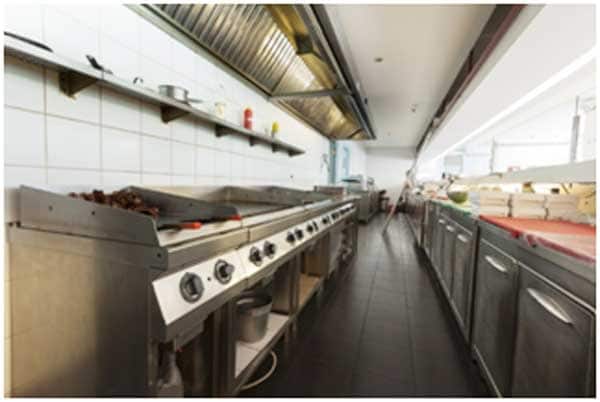#mc_embed_signup{background:#fff; clear:left; font:14px Helvetica,Arial,sans-serif; }
/* Add your own Mailchimp form style overrides in your site stylesheet or in this style block.
We recommend moving this block and the preceding CSS link to the HEAD of your HTML file. */
One of the best ways to save money as a brand-new, first-time restauranteur is to move into an old and abandoned restaurant. While it might seem like bad luck — the restaurant before yours closed for some reason, and you don’t want that reason to curse your venture — in truth a once-restaurant likely retains many of the features you need for your new business, including a functional dining room layout, lights and seats and, most importantly, a kitchen.
Even if the kitchen is old and outdated, you will probably save money inheriting the old stuff instead of trying to buy brand-new. Here is a guide to maintaining and upgrading your old commercial kitchen, so you can launch your restaurant without breaking the bank.

Equipment Maintenance
If your older kitchen equipment is working well now, that’s great! You should take advantage of its operationality to avoid the high costs of buying new equipment. However, regardless of whether your kitchen is hand-me-down or brand-new, you need to participate in critical equipment maintenance to keep it running as expected, reduce operation costs and avoid costly repairs and replacements.
The vast majority of equipment maintenance consists of keeping everything clean, which includes vents and hoods that carry greasy steam away from your cooking areas as well as any part of the machine that comes into contact with food. Additionally, you should regularly inspect your kitchen equipment, especially items that handle flammable substances, like gas ranges or deep fryers. You can outsource this task to a third-party firm, or you can delegate to a knowledgeable staff member in-house.
Equipment Refurbishment
Eventually, equipment will need repairs. You can easily find commercial kitchen OEM parts, built specifically for the makes and models in your kitchen, meaning that smaller repairs should be done swiftly and inexpensively. However, when your equipment starts to get much older, requiring much more substantial refurbishment, you might need to run some calculations.
The general rule of thumb is that if a repair will cost more than 50 percent of a new item, you probably want to dig deeper into your pockets and invest in the upgrade. Especially if you are using older and outdated equipment — and especially if you have a bit of budget to spare — the new equipment will improve operations and reduce your maintenance costs for some time. However, you shouldn’t go around replacing all your old equipment at once; you should wait until each expenditure is necessary.
Equipment Replacement
When you do need to replace your salvaged kitchen equipment, you shouldn’t immediately be drawn to the most expensive makes and models with excessive bells and whistles. These will undoubtedly cost you the most amount of money, and they might not even provide that much benefit, depending on your kitchen’s needs and expectations.
When shopping for new kitchen equipment, you should avoid the dazzling allure of the commercial kitchen showrooms — like luxury car sales floors, they promise immense investment and little value. Instead, you should try to build a relationship with an equipment sales representative, building mutual trust and focusing on your immediate and future needs. Then, you’re less likely to be taken advantage of and more likely to receive equipment your restaurant can use.
Equipment Sales
Finally, if you inherit a bit more equipment than your startup kitchen needs, you can almost always gain a little extra budget for repairs and replacements by selling the extras. You might contact other restauranteurs in your area to offer your unwanted wares; many might be interested in low-cost equipment, which means you can quickly and easily unload your items. You can also sell your equipment to a used kitchen equipment purveyor (like Restaurant Equipment World) or you can try to list the equipment yourself on sites like Craigslist or eBay.
It’s almost impossible to estimate the cost of a brand-new commercial kitchen because there is such great variation in what a kitchen might need. A full-scale, well-appointed kitchen could easily cost well over $500,000, even upwards of $1 million. Even one crucial piece of equipment, like a general-purpose range, could cost you $10,000, which is simply $10,000 you aren’t devoting to marketing, staffing, inventory management and other critical operations. Your kitchen equipment matters, but it shouldn’t suck up an undue amount of your entire business budget.
Thankfully, there is a simple solution: buying used. Because you can relatively easily refurbish older makes and models of burners, ovens, freezers and more, you shouldn’t waste time, energy and money acquiring shiny new equipment at startup. Instead, you can use what you got and slowly save, only investing in new tools when you can truly afford it.